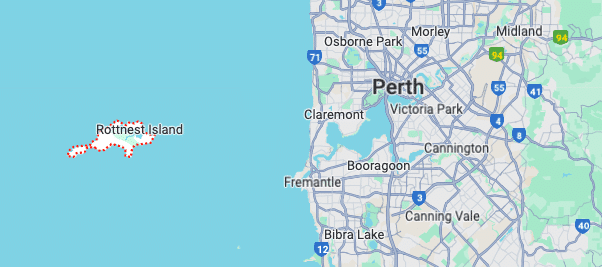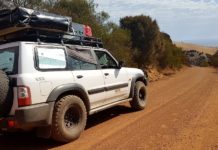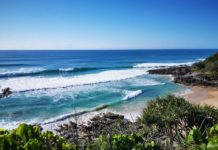
Rottnest Island, located 19km off the coast of Perth, is a must-visit. Once used as a prison for Indigenous people, the small island is now one of Western Australia’s top tourist destinations. We recommend you give yourself at least a full day for your visit, or you can opt for two days to really take your time and get away from it all for a while. Only accessible by ferry, cars are not allowed on the island so you will have to explore by foot, by bike or by bus. In this article we tell you everything you need to know about this little slice of Paradise.
Table of Contents
Where is Rottnest Island located?
The small Rottnest Island is located 19 kilometers off the coast of Perth. It stretches about 11 kilometers in length and 4.5 kilometers in width, offering a picturesque area of 19 square kilometers. This paradisiacal island is famous for its white sandy beaches, crystal-clear waters, and exceptional biodiversity.
Rottnest Island was initially inhabited by the Noongar Aboriginal people, who called it Wadjemup. It was also discovered by Europeans in 1696, when the Dutch navigator Willem de Vlamingh explored it and named the island “Rattennest” due to the small animals he mistook for rats. These creatures were actually quokkas, which have since become emblematic of the island. Over the years, the island was used as a penal colony, and then as a military station during World War I. Today, Rottnest Island is a popular tourist destination, attracting visitors from around the world for its preserved natural beauty and a variety of recreational activities, such as diving, cycling, and wildlife watching.
How to get to Rottnest Island ?
To get to the island, you’ll have to take a boat. The Rottnest Express is a ferry that connects Perth, Fremantle and Rottnest Island. The journey takes approximately 30 minutes from Fremantle, and 90 minutes from Barrack Street Jetty in Perth. You can book your ferry ride through Rottnest Express or Fast Ferries. The price varies depending on your point of departure, but budget around $80 for a round trip during the day. On weekdays, fares are lower, especially on Tuesdays when you can find $40 return tickets.
It is possible to bring your own bike on the ferry for an additional fee. If you don’t have a bike, you can rent one! There is only one bike rental company on the island so the prices are quite high ($30 per day for an adult, $20 for a child). However you can directly book a ferry and bike rental package online to get a better price.
You can also opt to travel by plane. This option offers amazing views, but be prepared to splash out!
Best season to visit Rottnest Island
The best time to visit Rottnest Island is during the Australian summer months, from December to February, when the weather is warm and sunny with average high temperatures around 30°C (86°F). This is also the most popular time to visit the island, so expect larger crowds and higher rates for accommodations and activities.
If you prefer milder temperatures and fewer people, you might consider visiting Rottnest Island in the fall or spring, from March to May or from September to November. Temperatures are generally cooler (around 25°C or 77°F), but there are fewer visitors and rates are often lower.
The Australian winter, from June to August, is generally cooler and wetter, with average high temperatures around 18°C (64°F), but it can be a good time for marine wildlife watching, including whales, seals, and dolphins. It’s also a less crowded time to visit the island.
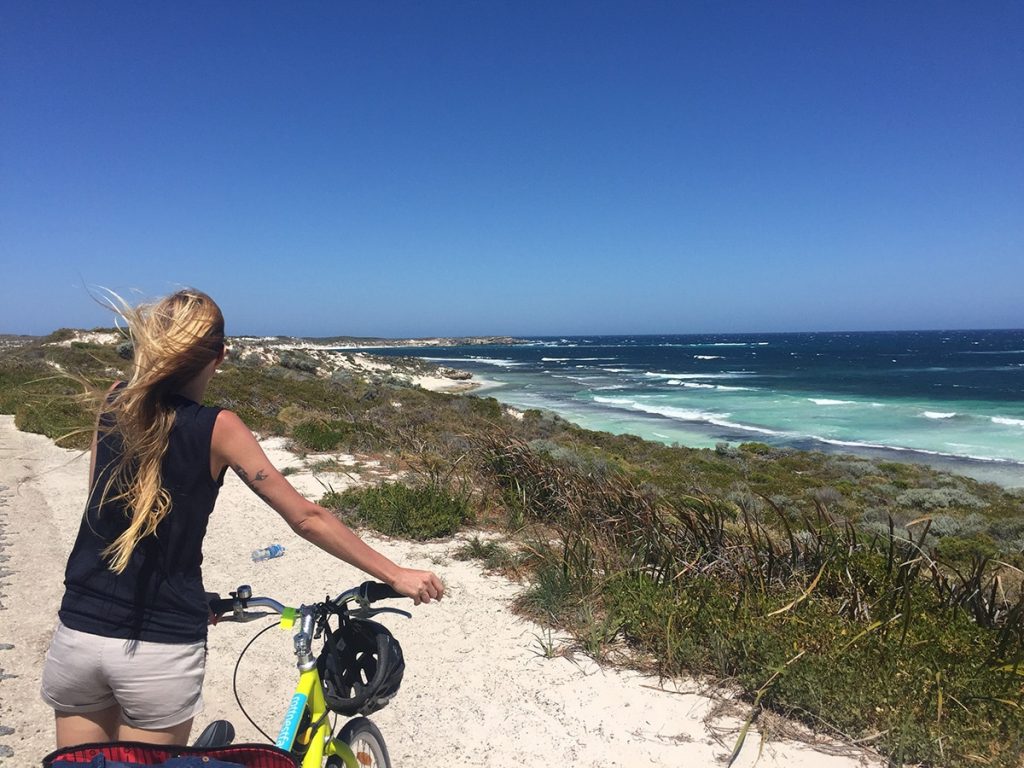
What to do on Rottnest Island?
The highlights
Thomson Bay: you can’t miss it, it’s where the ferry docks and the only village on the island
The Basin: for its natural swimming pool, its clear and shallow waters
Little Armstrong Bay: for its incredible deserted beaches
Cape Vlamingh: for the beauty of the landscapes
Little Salmon Bay: for snorkeling and seeing one of the most beautiful beaches in Australia
How do you get around the island?
Once you arrive on Rottnest Island, two means of transport are available to you: bus or bicycle. The Island Explorer bus circles Rottnest, stopping at the most famous beaches. There are daily, weekend and holiday fares. A bicycle will give you more freedom and remains the most popular mode of transport on the island.
The tour of the island by road is 22 kilometres, so cycling is ideal. You’re in for some decent exercise, as the island is pretty hilly! But the landscapes and beaches are stunning, so you’ll quickly forget about how hard you have to pedal to get around. It’s possible to see the whole island in one day, but if you want to take your time you can opt for the “small loop” and break up your sightseeing.
Also consider the Discovery Bus Tour, which goes around the island in 90 minutes while a guide tells you about the history of the island and its flora and fauna.
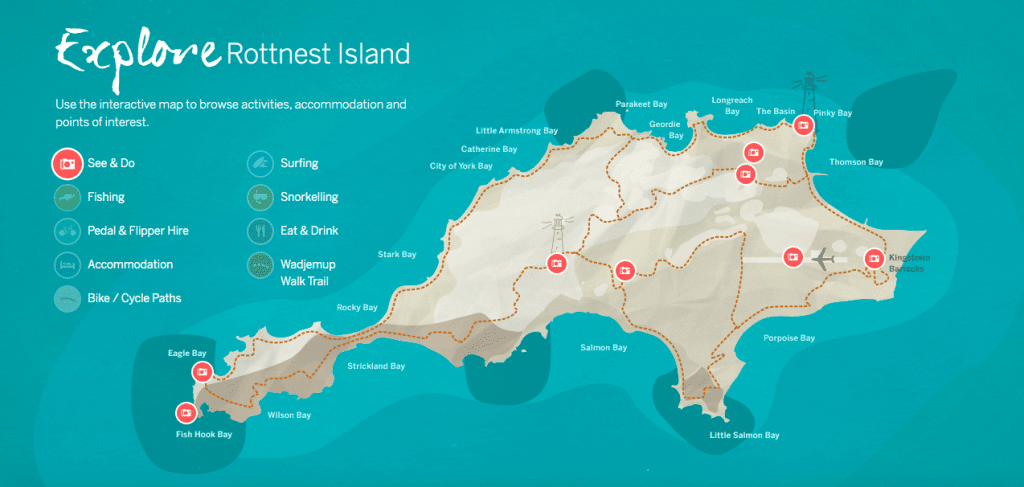
Places to explore on Rottnest Island
A first stop at The Basin is a must. It’s a small natural swimming pool and the perfect place to start the day with a bit of snorkelling! After that, continue west to Cape Vlamingh where a rugged landscape marks the end of the western territory. There’s plenty of wildlife to be found here – you’re bound to run into some snakes, iguanas, and other reptiles during your trip!
Back on your saddle, retrace your route for a while, taking the road east and stopping at the gorgeous Little Salmon Bay. With white sand and turquoise water, you won’t be able to resist taking a swim and admiring the fish.
Then, take a stroll through the only village on the island. Discover the quokkas, a strange little animal native only on to Rottnest Island. It’s a funny mix between a kangaroo, a rat and a squirrel.
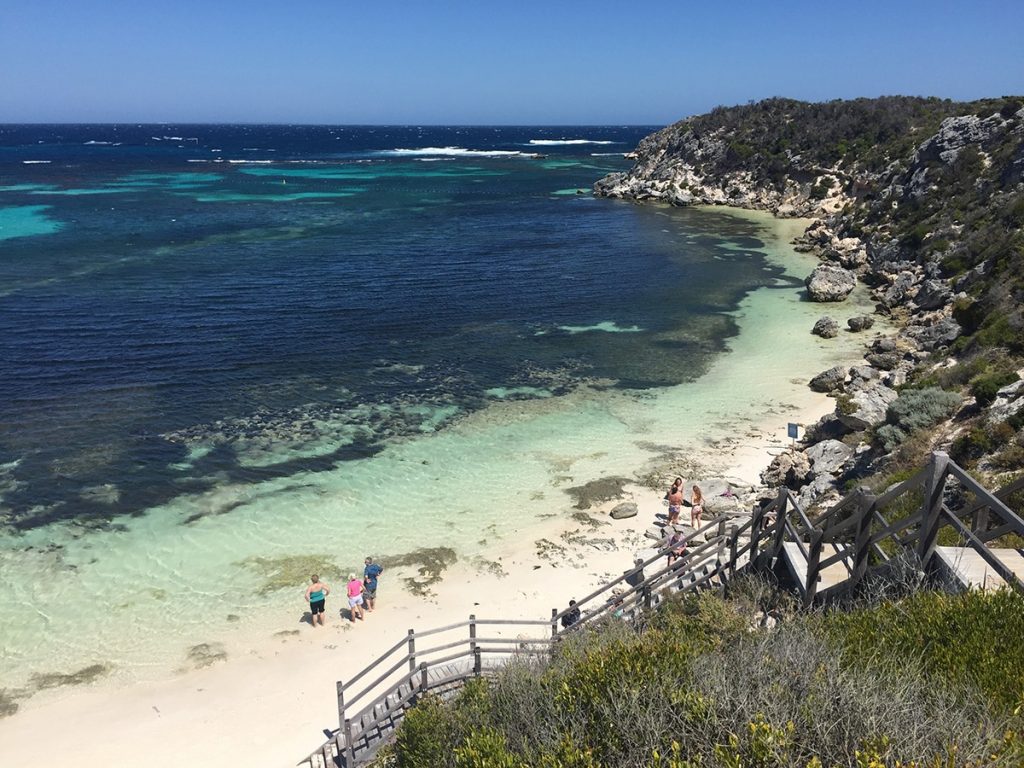
Things to do on Rottnest Island
With its 63 beaches and 20 bays, Rottnest Island is the perfect destination for water sports and relaxation.
You can also opt for some more adventurous activities – for example, parachuting over the turquoise waters of Rottnest!
There are also guided walking and Segway tours during which you will learn about the history of the island and the first colonies in Thomson Bay.
Rottnest Island is also the perfect place for whale watching during their annual migration along the coast. Between August and November, the whales return south with their newborns, and spend time in the waters of Rottnest Island. You can observe them from the West End Boardwalk, accessible by bike or with the Island Explorer bus.
Finally, what would a visit to Rottnest Island be without an encounter with the world famous quokka. This small marsupial, from the same family as the wallabies, is only found on this island.
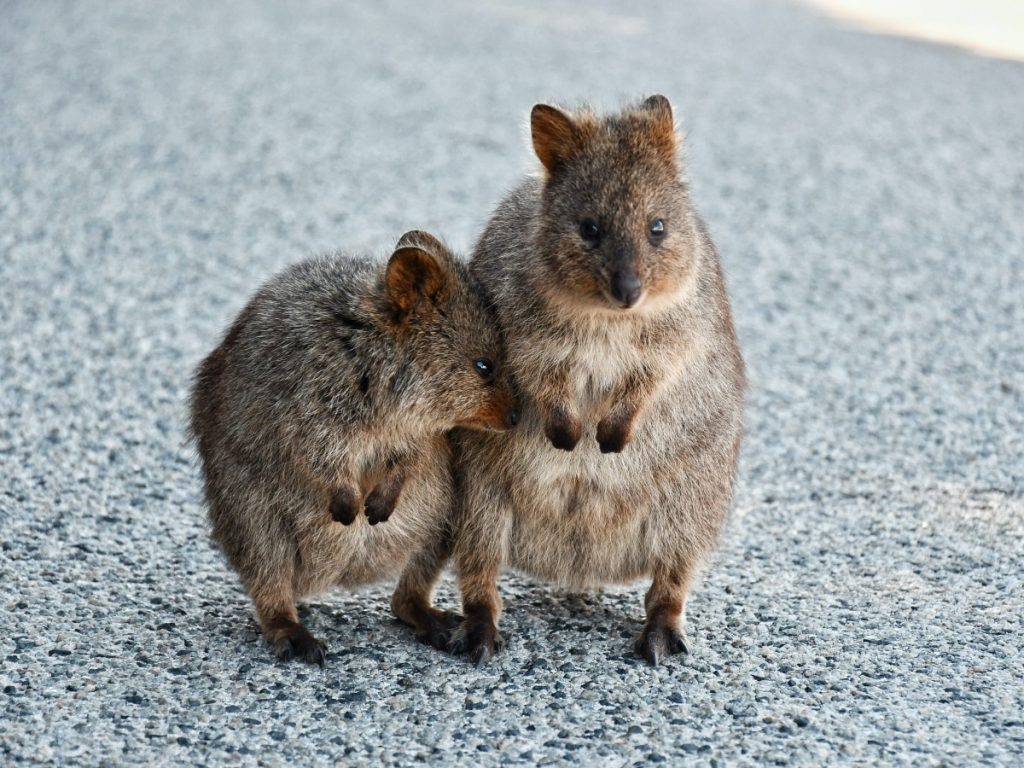
Where to stay on Rottnest Island?
If you want to take full advantage of the island and the heavenly beaches, spend one or more nights here. There are different types of accommodation to suit all budgets, all located on the eastern part of the island.
You can opt for the island campsite, with pitches from $40 per night (without electricity). The campsite offers 43 pitches as well as sanitation facilities, an outdoor kitchen and four barbecues with free access.
You could also decide to spend a night or two at the Rottnest Island Authority, a holiday village that offers dorm beds, villas or small cabins from $101 per night.
The Kingstown Barracks Hostel is also a great option for smaller budgets, with the option to choose from a private family room (sleeps up to four people) to a dorm. From $58 per night.
In the heart of Thomason Bay, the Samphire Rottnest is a stylish hotel with a selection of beachfront rooms from around $368 a night.
In a slightly higher price range, the Discovery Rottnest Island is a great place to stay. You can spend the night there in one of the 83 luxurious eco tents. Prices start at $410 a night and can go up to $850. The time of year also affects the prices.
Finally, for those on a bigger budget, the Karma Rottnest offers large rooms with terraces, and has a restaurant, swimming pool and spa.
How much should you budget?
Your budget will depend on how long you want to spend on Rottnest Island and what accommodation you choose.
The ferry ride will cost you around $80 per person. On the island, there is only one village where you can buy food, water etc. and the prices charged are high. If you plan on-site activities, your budget will inevitably increase. It’s a good idea to bring a packed lunch to keep you going if you’re coming on a day trip.
If you own your own snorkel and mask, bring it with you to save rental costs.
Don’t forget a pair of closed shoes and your camera (it would be a shame not to get some photos that will make all your friends jealous!)




















